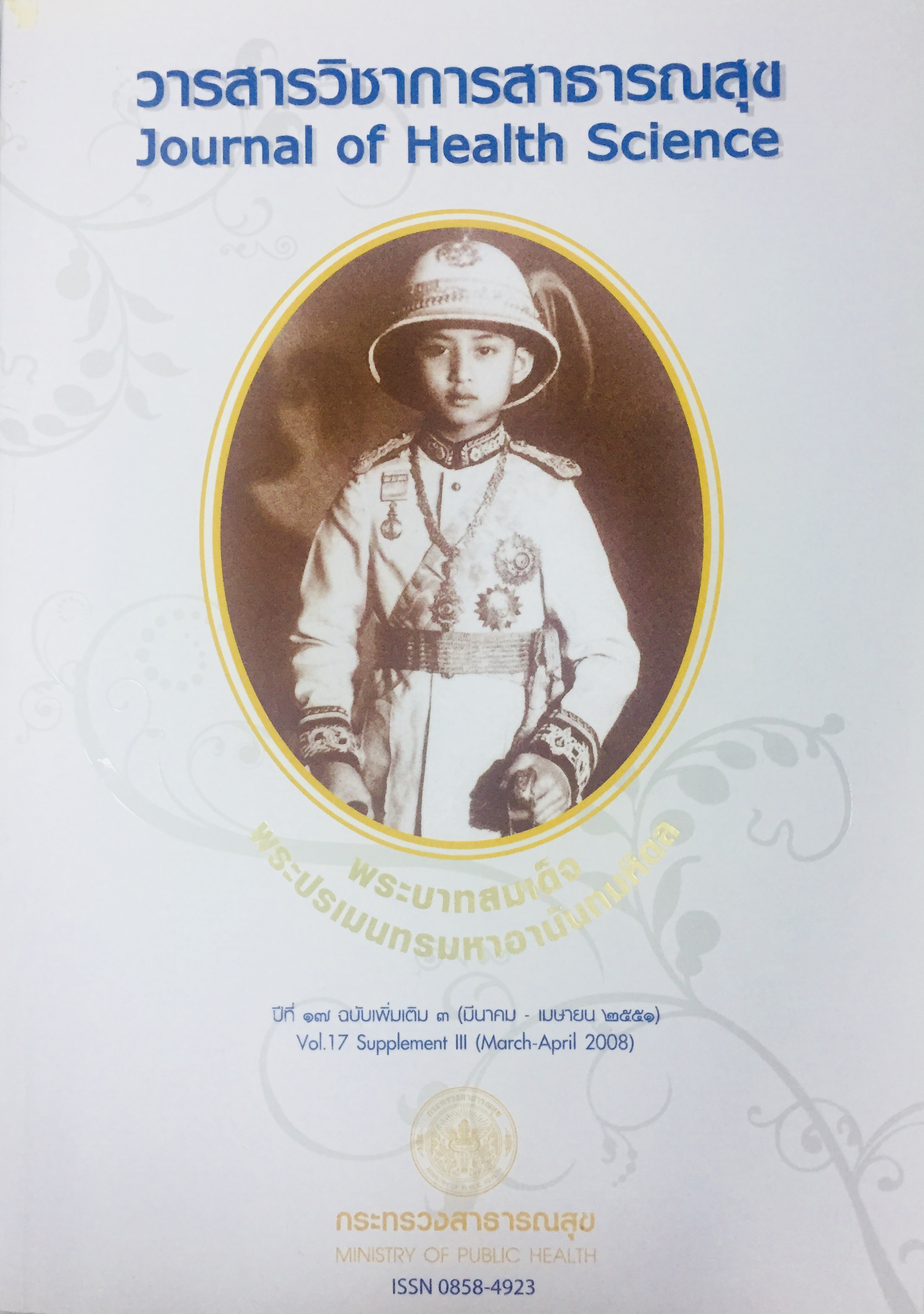Evolution in the Conservative Treatment of Humeral Shaft Fractures in Chon Buri Hospital
Keywords:
functional brace, conservative treatment, humeral shaft fractureAbstract
The objective of this retrospective study was to exoaluate the improvement of the conservative treatment of closed humeral shaft fracture in Chonburi hospital in the first phase of this study from 1 January to 31 December 2006. With a conservative treatment, limitations of shoulder and elbow motion were observed and further rehabilitation program was required. Among the patients who underwent conservative treatment, 50 percent loss in a follow up, 25 percent nonunion and 52 percent of closed humeral shaft fracture cases had requested without proper indication because they could not tolerate the immobilization in U slab any further. The functional brace is the key to improve the result of the conservative treatment. So the longitudinal descriptive study in the second phase was to evaluate the effectiveness and appropriate applicability of the functional brace inChonBuriHospitalduring 1 April 2007-31 March 2008. The study included 34 patients (27 males, 7 females; mean age 30.1 years; range 11 to 64 years) who were treated with functional bracing for humeral shaft fractures. The functional results were assessed using modified Wasmer score. The mean follow up was 23.8 weeks (range 18 to 26 weeks). Complete union was achieved in all of the patients within (mean) 11.7 weeks.The functional results were excellent among 79.4 percent and good in 20.6 percent of the patients. All participated with very good compliance and showed no complications. In conclusion, functional brace should be a primary choice of conservative treatment in closed humeral fracture in Chon Buri hospital.
Downloads
Downloads
Published
How to Cite
Issue
Section
License
Copyright (c) 2018 Journal of Health Science

This work is licensed under a Creative Commons Attribution-NonCommercial-NoDerivatives 4.0 International License.







